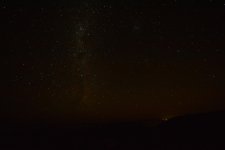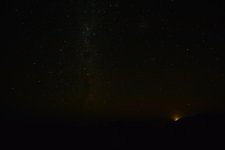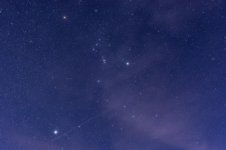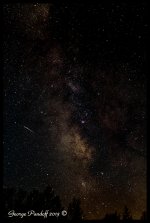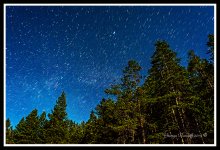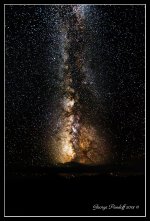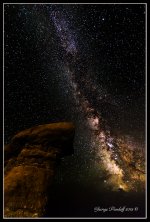Hi guys,
Im new to shooting astrophotography and I'm having a bit of problem with my Nikon D7100. I've recently some shots and find the shots very grainy and looks like theres some distinct green red lines in the photos. This was taken at pitch dark environment with the following setting.
Lens: Sigma 8-16mm @ 8mm
1st photo: Manual mode: Shutter speed 30s, F 4.5, EV+2 , iso 1250, NR on Hi, Active D-lighting Hi
2nd Photo ISO 800, NR low, Active D-lighting Lo
I've tried taking photo at lower ISO (like 800) and i cant see much with all else switched off. My friend who has a D7000 was with me and he used a sigma 10-24mm and his picture was much much better (less grainy, clearer foreground) . He uses the same settings except with his NR an D-lighting off. I tried with active D-lighting off too but it was so bad.
I've asked nikon technicians and they ran an analysis and said the photo was "fine" and expected. How is this possible when all the photos I seen online are all done at ISO so much higher but clearer (photoshop might have helped but I cant even save these shots with LR5)
Please advice!
Im new to shooting astrophotography and I'm having a bit of problem with my Nikon D7100. I've recently some shots and find the shots very grainy and looks like theres some distinct green red lines in the photos. This was taken at pitch dark environment with the following setting.
Lens: Sigma 8-16mm @ 8mm
1st photo: Manual mode: Shutter speed 30s, F 4.5, EV+2 , iso 1250, NR on Hi, Active D-lighting Hi
2nd Photo ISO 800, NR low, Active D-lighting Lo
I've tried taking photo at lower ISO (like 800) and i cant see much with all else switched off. My friend who has a D7000 was with me and he used a sigma 10-24mm and his picture was much much better (less grainy, clearer foreground) . He uses the same settings except with his NR an D-lighting off. I tried with active D-lighting off too but it was so bad.
I've asked nikon technicians and they ran an analysis and said the photo was "fine" and expected. How is this possible when all the photos I seen online are all done at ISO so much higher but clearer (photoshop might have helped but I cant even save these shots with LR5)
Please advice!

